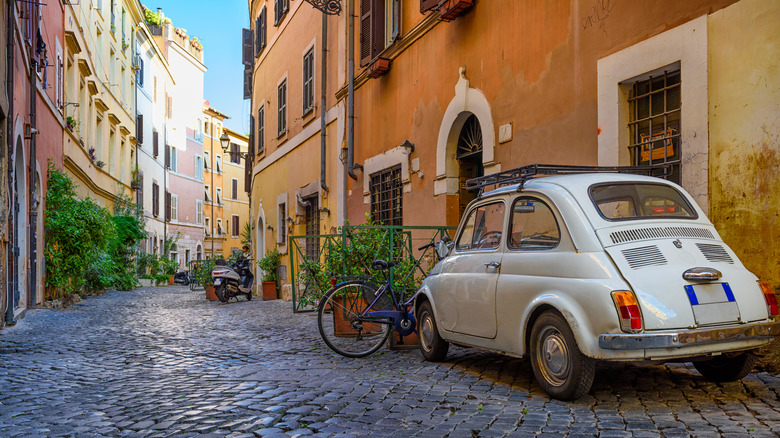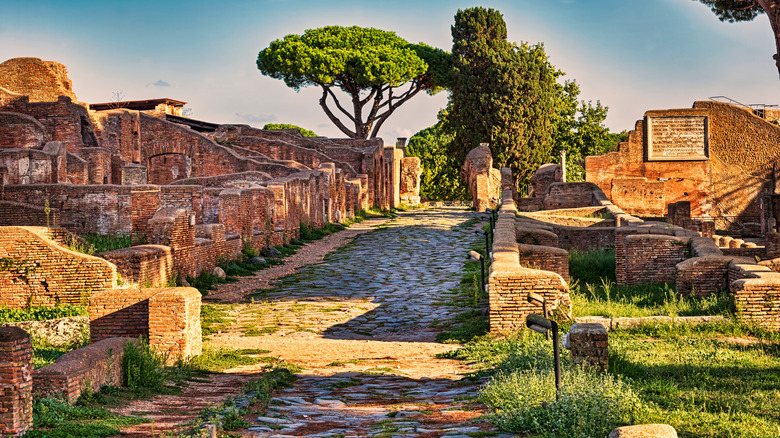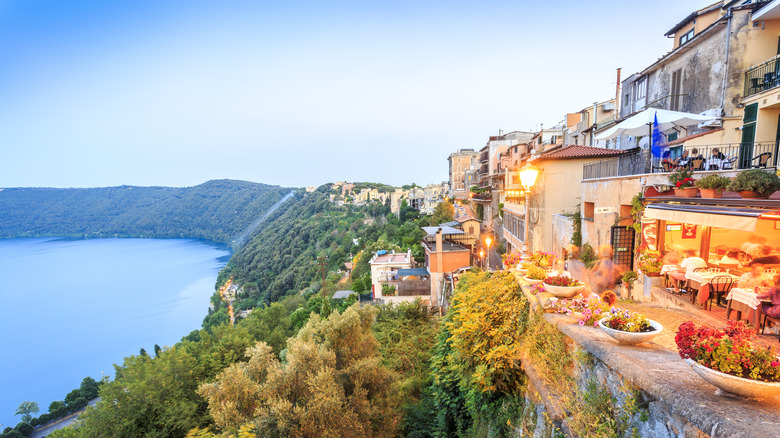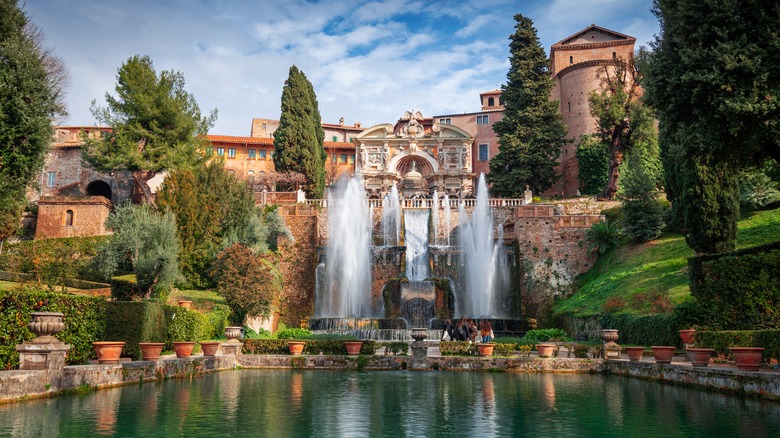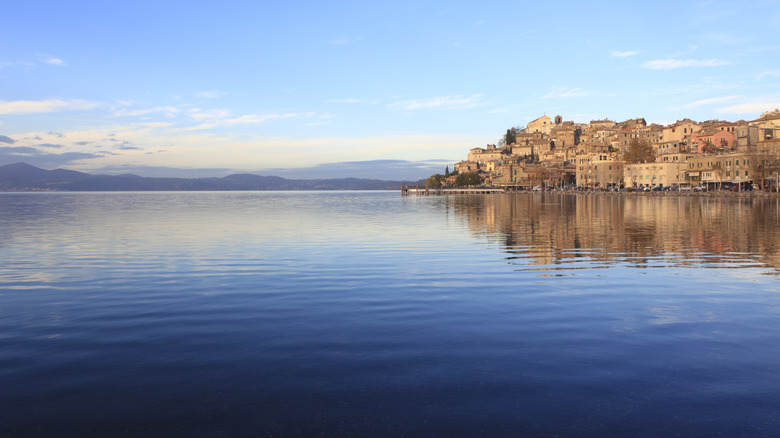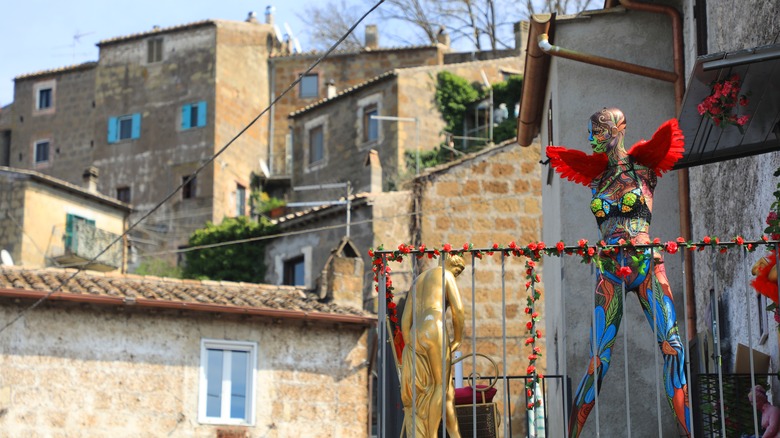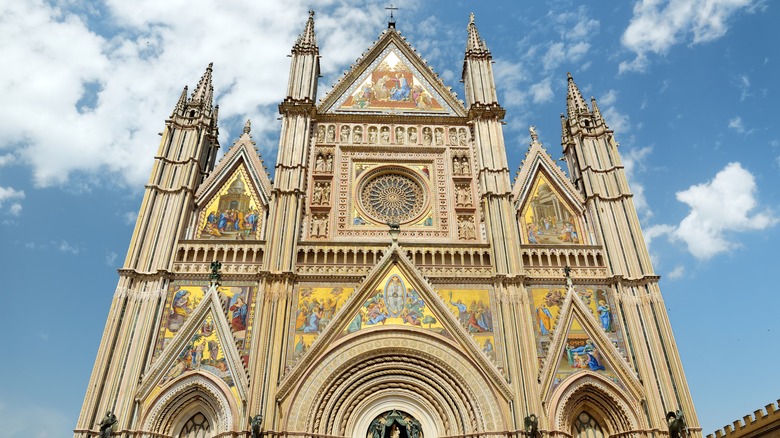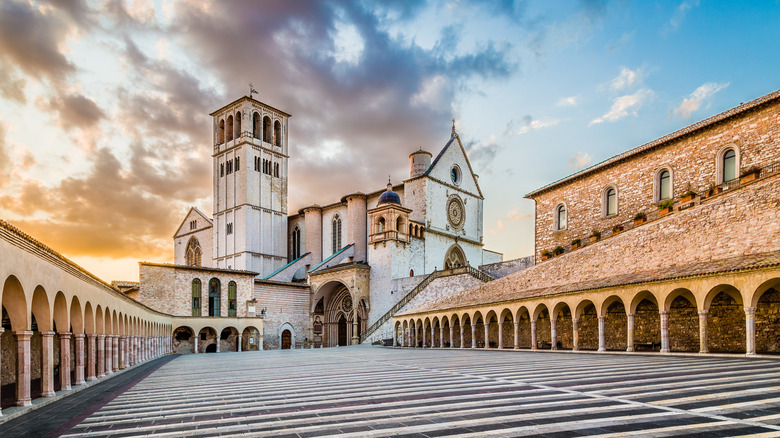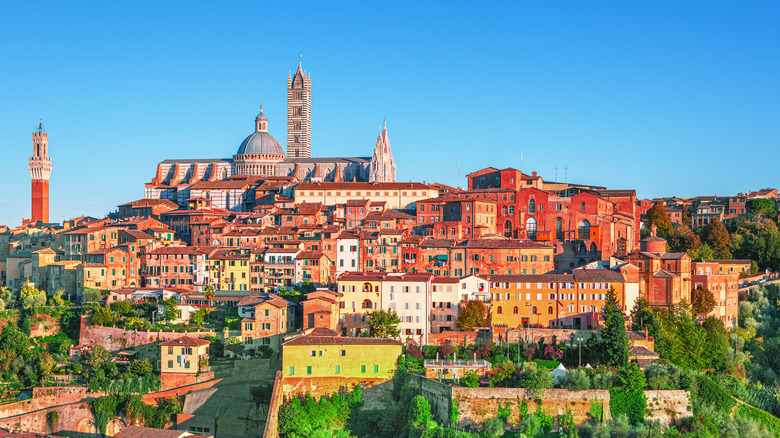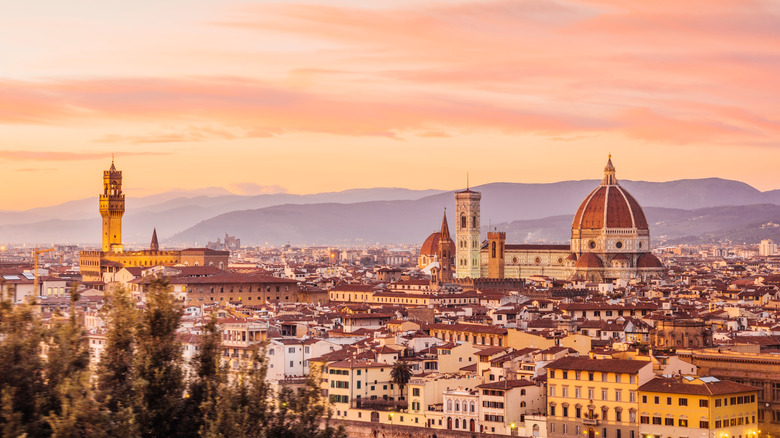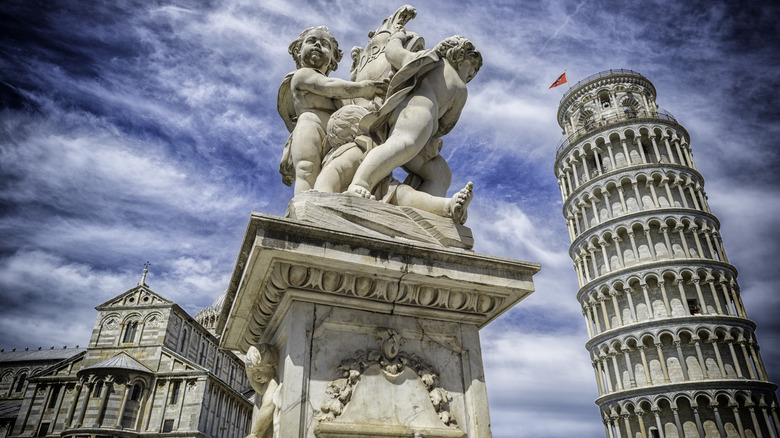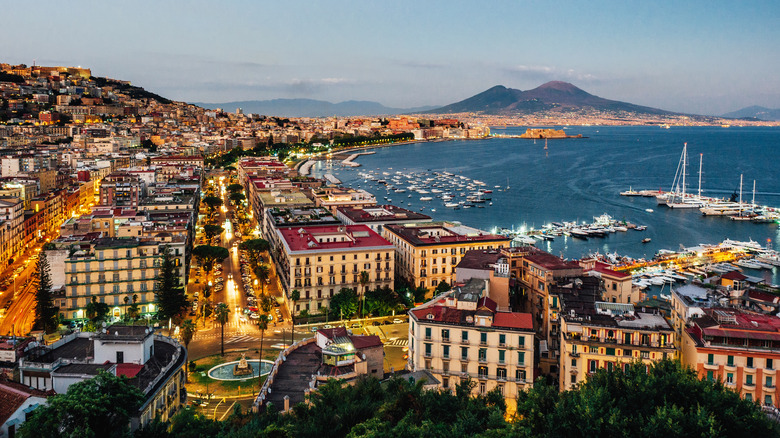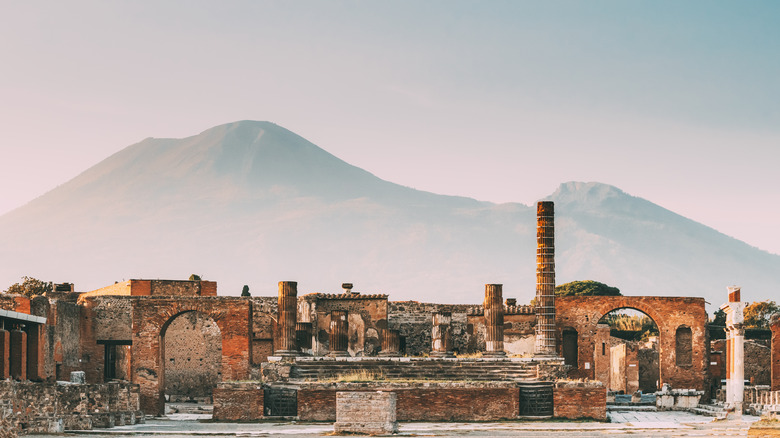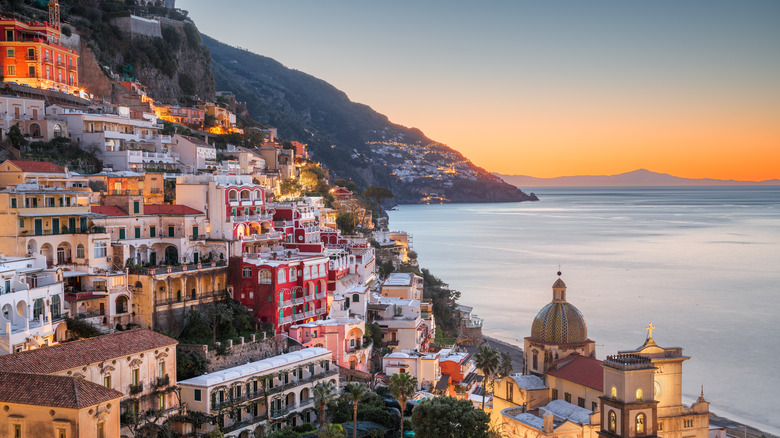The Best Cities For A Day Trip If You're Staying In Rome, According To Visitors
If you think Rome is magical, try heading out into its empire. Surrounding the Eternal City are innumerable villages, ruins, and resorts brimming with millennia of gorgeous, fascinating history. We scoured the World Wide Web and dozens of travel blogs and forums to find the best of the best Roman day trips.
We start with the sites closest to central Rome, then gradually head north through ancient Roman retreats and evocative medieval towns perched on volcanic hills until we arrive in the heart of Tuscany and explore the Renaissance treasures of Florence and Pisa. Then, we U-turn south of Rome and explore the bustle of Naples, the evocative ruins of Pompeii, and the luxurious beauty of the Amalfi Coast. All these sites are within three hours of central Rome, either by car or high-speed train. Many of the larger cities would take longer than just a day to explore, but the fact that you can get to Florence or Naples in just an hour and a half still gives you plenty of time to sightsee and delight in a leisurely lunch of pasta and prosecco.
Without further ado, here are some of the best day trips for your next Roman holiday.
Ostia Antica
Who knew that a 45-minute metro ride from the center of Rome could actually transport you back millennia? Ostia Antica, the site of ancient Rome's major port city, is one of Italy's best-preserved archaeological sites, offering visitors a tantalizing glimpse into ancient theaters, bathhouses, apartment buildings, and even mosaic billboards advertising local shops, admittedly long out-of-business.
Take the metro to the Ostia Antica stop, and you'll arrive at a 247-acre open-air museum of a city that once boasted roughly 100,000 inhabitants. The city was founded in around 620 B.C. at the mouth ("ostium") of the Tiber River. By the second century A.D., when Rome controlled the entire Mediterranean, the city was a vital, wealthy commercial port. Today, visitors can book several private or self-guided audio tours lasting (on average) three hours. Tours will guide visitors through the remains of the vast Ostia Antica Theatre, where performances are still held today; the Forum Baths, a large public bathhouse, and the Archaeological Museum of Ostia, which contains numerous sculptures and mosaics unearthed over the years.
Ostia Antica, hailed as a quieter alternative to Rome and Pompeii, is open Tuesdays through Sundays, and entry costs €19.
Castelli Romani
To see a different slice of ancient Roman life, take a 30-minute drive along the ancient Via Appia to Castelli Romani, where instead of a workaday port, you'll see lush, lakeside volcanic hills of vineyards and villages where millennia of Roman nobility have come to unwind. Castelli Romani is a national park consisting of 16 idyllic villages situated around Lake Albano, which boast everything from porcupines to papal palaces.
Castel Gandolfo, the elaborate domed palace situated atop a hill overlooking the lake, has been the summer residence of the pontiff since the 1500s, but it has only been open to tourists since 2016. Today, the palace's bejeweled halls and elaborate gardens are one of Castelli Romani's top attractions, but with 16 villages and centuries of history, it's just the start. Visitors rave about the famous Frascati vineyards, the former Byzantine Greek Abbazia Greca di San Nilo, the subterranean Mithraeum of Marino caves dedicated to the ancient god Mithras, and the overall charm and serenity of picture-perfect hilltop villages offering beaches, forests, shops, restaurants, and history. You probably won't get to all the various attractions in a single day, but a number of half-day or full-day tours can guide you through some of the most popular attractions.
Tivoli
For another ancient retreat, head about 30-40 minutes by car or train to Tivoli, the "Versailles of Ancient Rome." But unlike Versailles, Tivoli actually boasts two famous palaces — the ancient Villa Adriana of Emperor Hadrian and the 16th-century Villa d'Este palace, both UNESCO World Heritage Sites.
Emperor Hadrian wanted to build a villa that celebrated the treasures of the Roman Empire, which was at its apex during his rule. A sort of EPCOT of its day, the Villa Adriana recreated famous structures from around the empire, including libraries, temples, baths, theaters, and palaces. Much of the palace complex was plundered in the ensuing centuries, but enough remains for an incredible visit.
The Villa d'Este remains gorgeously intact. The interior is a marvel of frescoes, tapestries, and craftsmanship, but the villa is best known for its hillside gardens, which cling to a steep cliff flowing with waterfalls, pools, streams, cypress trees, and panoramic views. The two villas are the tip of the iceberg when it comes to Tivoli's jewels. Don't miss the Villa Gregoriana, a park of woods and waterfalls at the foot of the ancient Temple of Vesta, the Rocca Pia medieval castle, or the 300-year-old Ristorante Sibilla, a watering hole for celebrities and royalty.
Bracciano
If you visit Rome in the hot summer months, you'll be delighted to take an hour's train ride north to Bracciano, an idyllic ancient village perched atop a lakeside hilltop. The village is a storybook maze of narrow lanes filled with shops, churches, and trattorias leading up to the imposing Orsini-Odescalchi Castle. The castle was built in 1485 and was inhabited by a series of noble families. Today, it is a well-maintained museum, cultural event center, and site of a few celebrity weddings, including the one between Tom Cruise and Katie Holmes.
After visiting the castle, venture down the cliff to Lake Bracciano, one of Italy's largest, cleanest, and bluest lakes. The lake has many different beaches, including a sandy beach, a pebble beach, and a beach for dogs. Rent an umbrella and a chair, and take a dip into the crystalline water. Lake Bracciano is also renowned for its many beach clubs, which allow visitors to rent kayaks, sailboats, paddleboards, or windsurfing rigs — basically anything without a motor, which is why the lake is so clean and quiet. The beach clubs also include delicious lakeside restaurants, which often offer fish caught that day in the lake.
Calcata
Looking for a creative getaway from the Eternal City? Drive 50 minutes north to Calcata, a mystical, bohemian artist's colony high on a cliff that is otherworldly. Since prehistoric times, the town has had a reputation as a place inhabited by mystical spirits. In the 1930s, the impoverished, isolated medieval city was abandoned for fear it would collapse. In the 1960s, artists from around the world began squatting in the dusty stone homes and, over the years, turned the decrepit village into a thriving, alternative, geologically stable artists colony.
Today, you can visit many of the workshops of the original revivalists, some of which are based deep inside caves. The Moon Lab, featuring handcrafted works inspired by the moon, and the Grotta Sonora, a workshop inside an Etruscan cave focusing on sound sculptures, give an idea of the Calcata vibe. Visitors also rave about Sala Da Tè, the "Room of the 201 Teas" that pairs 201 varieties of teas with sweeping views, and the Opera Bosco, or the Museum of Art and Nature, an open-air museum in the forest featuring 40 works made only from natural materials. The surrounding Valle del Treja Regional Park is a beautiful wooded space to commune with the muses who inspired this bewitching region.
Orvieto
Orvieto is as famous for what lies beneath its cobblestone streets as the cathedrals, vine-covered shops, and trattorias above them. At first glance, it appears like another impossibly beautiful medieval village perched atop a cliff of volcanic tuff. But, after you ascend the scenic cable car ride up the cliff, it's time to venture inside it. Underneath Orvieto lies an entire underground city of caves, grottos, and over 1,200 tunnels dug by the Etruscans about 2,500 years ago. Subsequent civilizations added mills, wells, furnaces, dumps, and more.
Today, visitors can descend 120 feet to take a subterranean, slightly surreal walk through time. For another exciting underground adventure, climb 248 steps down into St. Patrick's Well, a 175-foot-deep 15th-century well that was so difficult to build that Italians still say a particularly challenging task is "like building St. Patrick's Well."
Above ground, wind through the town's charming, narrow streets to arrive at the Orvieto Cathedral, a 16th-century structure known as the "Golden Lily" due to the gleaming golden mosaics illuminating its exterior façade. For panoramic views, climb to the top of the 164-foot-tall brick Moro Tower. To enjoy all of these activities and more, consider purchasing a €25 Orvieto Card.
Assisi
Most Italian cities have a central duomo (cathedral) and perhaps a few smaller churches, but not as many have monks in brown robes and nuns in habits milling around crowds of pilgrims. As the birthplace of St. Francis and St. Clare and home to too many churches to mention here, the hilly Umbrian city of Assisi may be one of the most important cities in Roman Catholicism.
A little over two hours north of Rome by car, Assisi is another gem nestled among rolling hills. Its most well-known attraction is the Basilica of St. Francis of Assisi, the 260-foot Gothic cathedral containing the tomb of the saint it is named after. Today, entry to the church is free, and scores of pilgrims and tourists pay special attention to the frescoes of Giotto di Bondone depicting the life of the famous saint. Just next door are several more churches, including the Cathedral of San Rufino, the Convent of San Damiano, the Basilica of Santa Maria degli Angeli, and the ancient Roman Temple of Minerva, to name just a few.
Atop a steep cliff rising above the basilica lies the Rocca Maggiore, a 14th-century citadel guarding Assisi with outstanding views. A 14-minute walk away lies the Basilica of St. Clare, the burial place of the nun who was one of St. Francis's first followers and founder of the Order of the Poor Ladies, also known as the Poor Clares.
Siena
Siena offers a brilliant snapshot of medieval Italian life. In the 1300s, this gorgeous spot in the heart of Tuscany was one of Europe's most powerful city-states, an independent republic on par with Florence and Venice. But after the Great Plague and military defeat by Florence, the city slid into irrelevance and has remained much the same for 700 years.
Travel two and a half hours north of Rome and time travel into a symphony of stone and pastel lining narrow, winding alleyways, the perfect picture of romantic Tuscany. Arrive in Il Campo Piazza, the seashell-shaped central piazza containing the grand brick Palazzo Pubblico city hall and its iconic 289-foot Torre del Mangia. Book a joint ticket ahead of time to climb the tower and tour the palazzo and its Museo Civico, which is most famous for Ambrogio Lorenzetti's instructive "Allegory of Good and Bad Government" fresco hanging in the old town council room.
If you're willing to brave summer heat and crowds, visit Il Campo on July 2 or August 16 to witness the Palio horse race around the shell, which inspires fierce competition from the city's different "contrade" neighborhoods.
And like any proper Italian city, Siena contains an exceptional cathedral. The 293-foot Duomo di Siena, consecrated in 1215, is famous both for its Gothic striped spire and resplendent interior filled with works by Michelangelo, Donatello, Bernini, and the watchful eyes of 172 popes.
Florence
Ah, Firenze. It is easy to fall in love with the Tuscan capital, the widely accepted "birthplace of the Renaissance," brimming with iconic statues, museums, and cathedrals. It's more of a week trip than a day trip, but since the bullet train from Rome takes only about an hour and a half, we knew we had to include it.
To save time and money on what's sure to be a busy day, it's best to book one of the many city passes on offer. The €85 Firenzecard buys entry to most major museums plus a supplemental exhibition, while the €77.90 City Pass gets priority entry to the city's top sites, along with a free guided city tour and audio tour of the Florence Cathedral.
The cathedral is a masterpiece. It is definitely worth a visit, not only inside but also atop the largest brick dome ever constructed for panoramic city views. Equally unmissable is the unofficial symbol of Florence, the Renaissance, and perhaps Western art itself: Michelangelo's David. The original statue stands in the Galleria dell'Accademia, but there are two more copies in the Piazza della Signoria and another atop the Piazzale Michelangelo. Other crucial stops include the Renaissance masterpieces inside the Uffizi Galleries and the cluster of shops seemingly growing out of Florence's oldest bridge, the charming medieval Ponte Vecchio.
Pisa
Just over an hour west of Florence by car and a two-hour bullet train north of Rome, a certain tower tilts ever so slightly and captures the imagination of millions. Pisa may be most famous for its iconic leaning tower, but it is a stately treasure trove of cathedrals, palaces, and museums that would make any history buff salivate.
Once you've taken the obligatory photo in which you pretend to prop up the 186-foot tower – which leans because it was built on ground that is too soft – you can climb the winding 251-step staircase to the top. Once you've come back down, use your €32 Pisa Pass to enjoy some of the other top attractions at the aptly-named Square of Miracles. Just in front of the tower is the Pisa Cathedral, which dates to 1118; the Baptistery of San Giovanni, the largest baptistery in Italy; the Camposanto cemetery, the frescoed burial ground of Pisa's elite; and museums devoted to the cathedral and to the original sinopia drawings that later became frescoes.
Outside the Square of Miracles lie many more miracles. Take a walking tour to discover some of the city's other churches and palaces, or take a leisurely stroll around the narrow, winding lanes to enjoy its excellent food, shopping, and street life.
Naples
An hour's high-speed train or flight south of Rome will land you in Naples, Italy's third-largest city. The seaside city is often described as "gritty," "noisy," and "chaotic," but in the same breath lauded for its incredible food, culture, and heritage, making it a real magnet for history buffs.
Naples is called both the "City of Five Hundred Domes" and the "City of Seven Castles." Guided tours will transport you around the grand Naples Cathedral, famous for the vial of saint's blood that predicts what kind of luck Naples will have for the coming year. You should also take a Castle Tour, which includes the Castel dell'Ovo, the ancient Roman seaside castle named after a magical egg supposedly placed there by the poet Virgil, and the Castel Nuovo, the medieval castle located near City Hall.
Like Orvieto, Naples is also famous for its mysterious underground. A "Napoli Sotterranea" tour will transport you through 2,400-year-old Greek and Roman tunnels, aqueducts, and theaters. Travelers also rave about the San Gennaro Catacombs, which contain nearly 3,000 graves, crypts, and ancient art.
Crypts and tunnels may not be for everyone, but pizza surely is. Naples is credited as the birthplace of modern pizza and is home to a vast array of exceptional pizzerias. Go straight to the source at the Antica Pizzeria Port'Alba, which was founded in 1738 and is the oldest pizzeria in the world, or L'antica Pizzeria da Michele, one of the city's most famous.
Pompeii and Herculaneum
You know that big mountain you marveled at as you approached Naples? Approach with caution. It's Mount Vesuvius, an active volcano that erupted in 79 A.D., killing thousands of people. Tragic as the eruption was, it left behind immaculately preserved Roman ruins in Pompeii and Herculaneum that are still visible today.
Pompeii is world-famous, but not as many people know about Herculaneum, a smaller, wealthier city that was also destroyed. Travelers recommend seeing both. If you only have a day, that is possible, though the day will likely be long and rushed. The easiest bet is to try one of the many tours that include Pompeii, Herculaneum, and, often, the roughly 2-mile hike up Mount Vesuvius.
If you'd rather zero in on one, be aware that Pompeii is 163 acres and often crowded. But, with the right guide, you'll be able to see its many ruins, which include the Teatro Grande, a 5,000-seat theater, the 12,000-seat Amphitheatre of Pompeii, the Civic Forum, the Large Palaestra sports training facility, and the body casts of volcano victims, among many other attractions.
Herculaneum is just 49 acres, and less crowded. It is also more shaded, and a better visit on a hot day. The wealthy city is better preserved than Pompeii, and you can travel inside opulent homes to view colorful frescoes, murals, and mosaics, as well as numerous shops, baths, statues, and even skeletons.
Positano
Tired of noisy streets and anxious glances at the spout of Vesuvius? Travel less than an hour south of Naples by car, train, or ferry, and you'll find yourself along Italy's magical Amalfi Coast, a 30-mile stretch of dreamy pastel-colored villas perched high above a sparkling turquoise sea. The coast comprises a few cities, but to truly live la dolce vita for a day, head to Positano, a gleaming resort village that John Steinbeck said "bites deep. It is a dream place that isn't quite real when you are there and becomes beckoningly real after you have gone."
That "dream place" is renowned for its many excellent hotels and restaurants, notable among them Hotel Poseidon and Le Sirenuse. Even if you don't stay there, it's worth sampling the cuisine at their acclaimed restaurants, Il Tridente and La Sponda, respectively. For more waterside dining, lounge at one of Positano's many private beach clubs, which offer excellent dining and are less crowded than Spiaggia Grande, the main beach.
But no trip to the Amalfi Coast is complete without experiencing SS163, or Amalfi Drive, the enchanting road zigzagging through towering mountains and the Mediterranean. We highly recommend booking either a car, boat, or scooter tour to get bitten as deep as you can.
